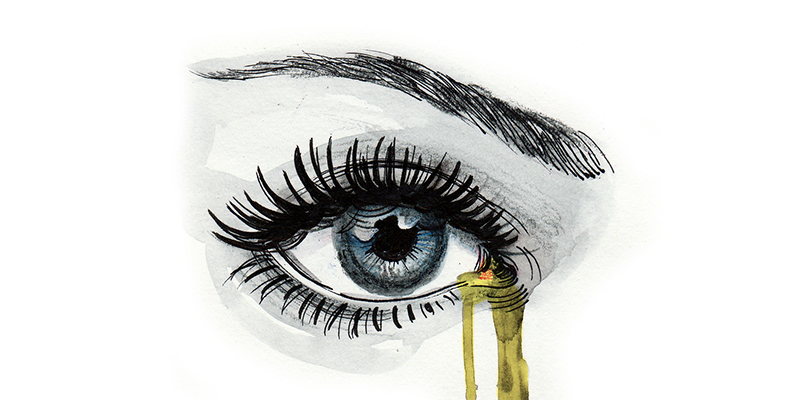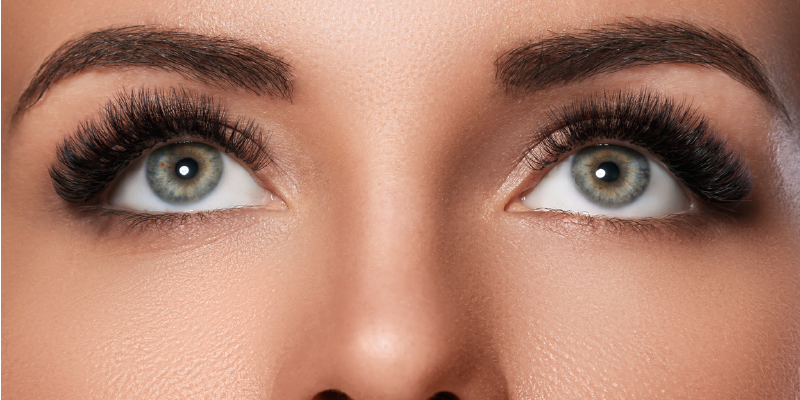Digital eye strain – a new epidemic!
In today’s fast-paced, tech-ruled world, it’s virtually impossible to avoid focusing our attention on our computer, tablet, and smartphone screens for a good portion of the day.
However, these long periods of “screen time” have created an epidemic of eye conditions like digital eye strain, dry eye, and blepharitis.
Take a look at some of the common signs of these conditions, as well as some great tips for reducing the negative effects on your eyes due to computer use.
Digital Eye Strain

Digital eye strain is also called computer vision syndrome. It refers to a group of eye problems associated with staring at a computer screen or other similar device regularly for hours at a time.
While initial symptoms like mild eye discomfort and blurred vision may fade away on their own once your eyes have had a break from the computer, developing a habit of staring at your computer screen for extended periods of time could lead to persistent or more severe symptoms, which may also include headaches and neck and shoulder pain due to poor posture [1].
If your job requires you to work on the computer every day, try to integrate 20-second breaks from your computer screen every 20 minutes by looking at something else at least 20 feet away [1].
This “20-20-20 rule” can not only help to reduce eyestrain now, but it can also help to prolong the health of your eyes down the road.
Dry Eye Syndrome

If you’ve ever experienced dry, red, itchy eyes, you were most likely dealing with dry eye syndrome.
Although dry eyes can be caused by a number of different factors, including allergies and adverse reactions to certain cosmetic products, one of the biggest contributors to dry eye syndrome is computer use.
The problem is that when we are staring at a computer screen all day, or even reading an e-book for hours, we tend to blink much less than we normally would. Infrequent blinking can cause the eyes to dry out, which, in turn, leads to uncomfortable symptoms like itching and redness.
To help minimize dry eye symptoms, try to make a conscious effort to blink more frequently when using the computer. You can also try using lubricating eye drops to help replenish lost moisture in your eyes while working on the computer.
Only use medicated, or steroidal eye drops, though, if prescribed by your eye doctor, as the long-term or inappropriate use of these types of medications can have adverse side effects.
Blepharitis

Many people who suffer from blepharitis, a common inflammatory eye condition, notice that their symptoms worsen with computer use [2].
Blepharitis occurs when bacteria and a specific type of mite called Demodex build up at the base of the eyelid and cause oil glands to become clogged [3]. With less oil content, the eyes can easily become dry, itchy, and irritated. Then, when you add extended screen time into the mix, dry eyes can become even worse.
When dealing with blepharitis, you can follow the same tips mentioned above to help reduce eyestrain and dryness caused by computer use.
However, to address the underlying problem, try using a special cleansing product designed specifically to eliminate Demodex mites.
Studies have found that 4-Terpineol, one of the 15 major compounds in tea tree oil, is the most effective isolated component at killing Demodex, more so than tea tree oil as a whole [4].
Currently, Cliradex is the only commercially available product that isolates 4-Terpineol for improved eyelid hygiene.
In Summary
Giving up our computers, tablets, smartphones and other devices for good isn’t a very practical solution to digital eye strain.
However, But we can make a point to take a break from staring at our screens throughout the day to help reduce eyestrain and even prevent vision problems down the road.
Resources
[1] Computer Vision Syndrome – American Optometric Association
[2] Managing Blepharitis: Tried-and-True and New Approaches – American Academy of Ophthalmology
[3] Blepharitis – Mayo Clinic
[4] Tighe, S., Gao, Y. Y., & Tseng, S. C. (2013). Terpinen-4-ol is the most active ingredient of tea tree oil to kill Demodex mites. Translational vision science & technology, 2(7), 2-2.




